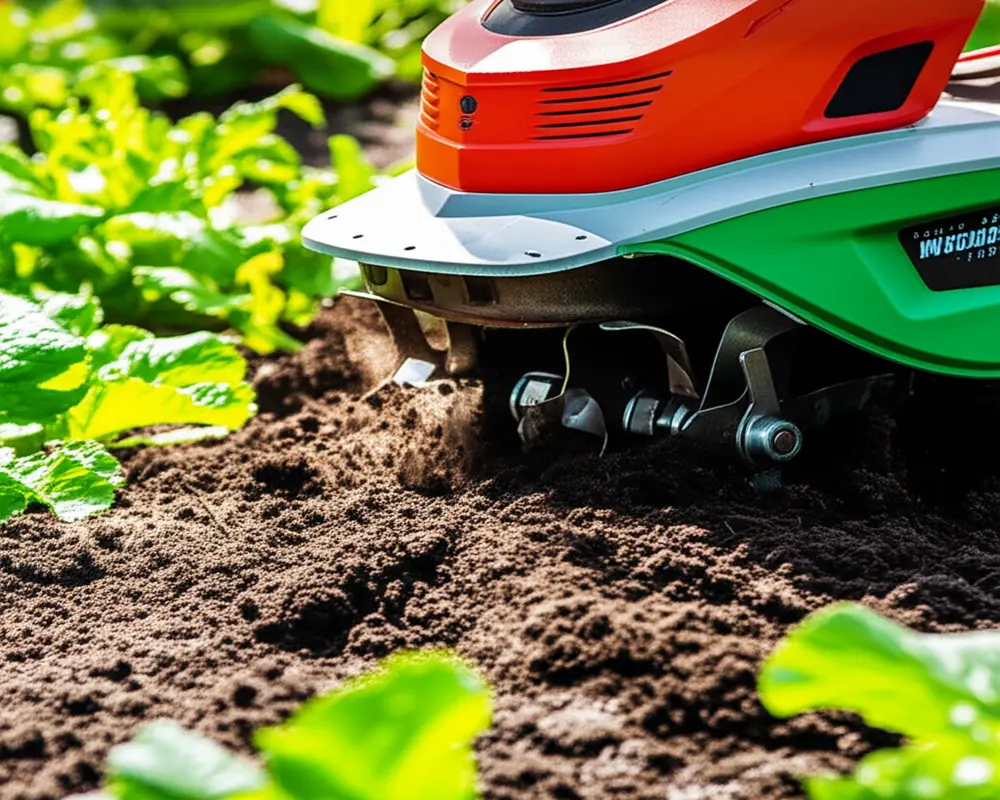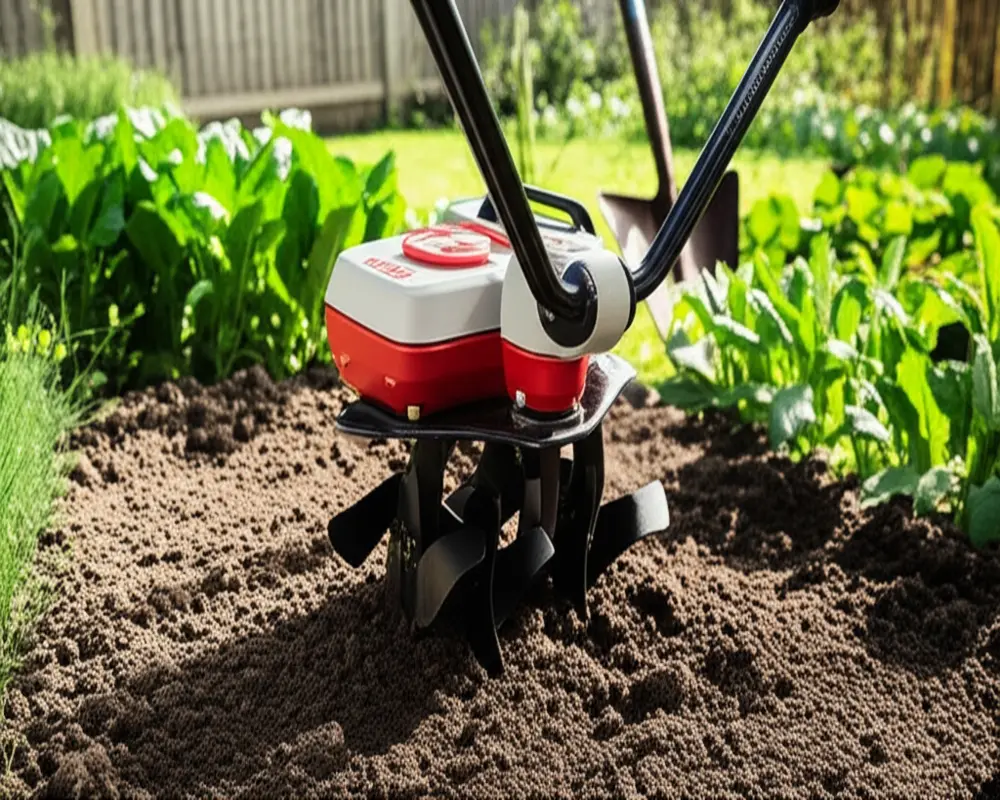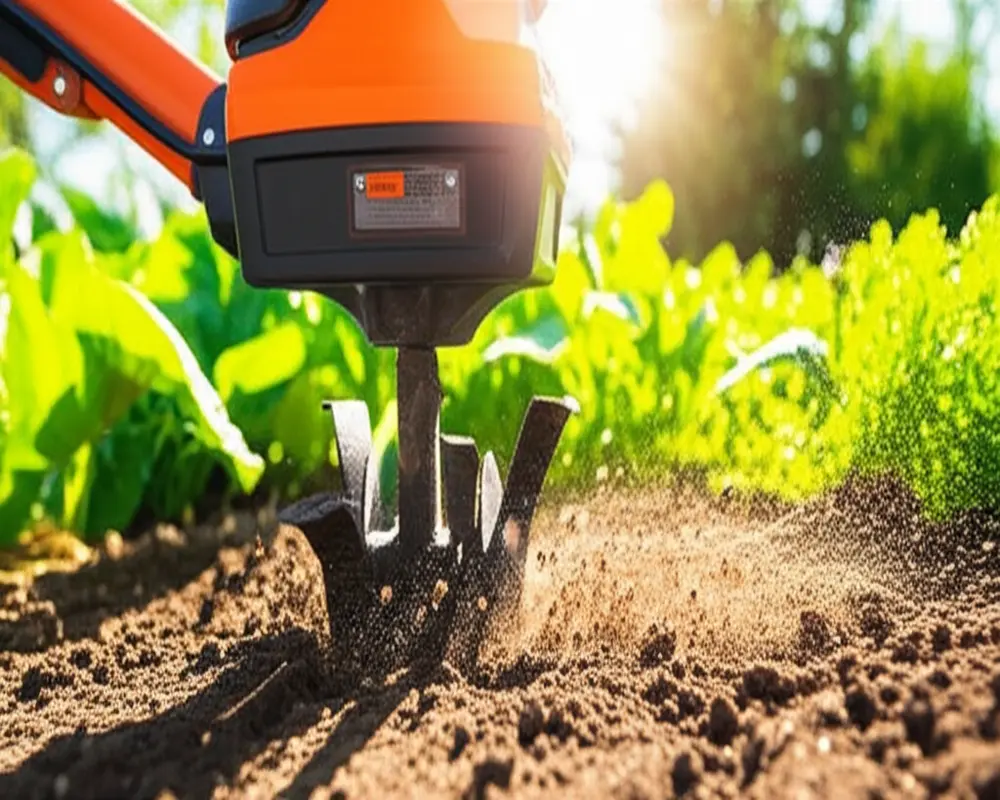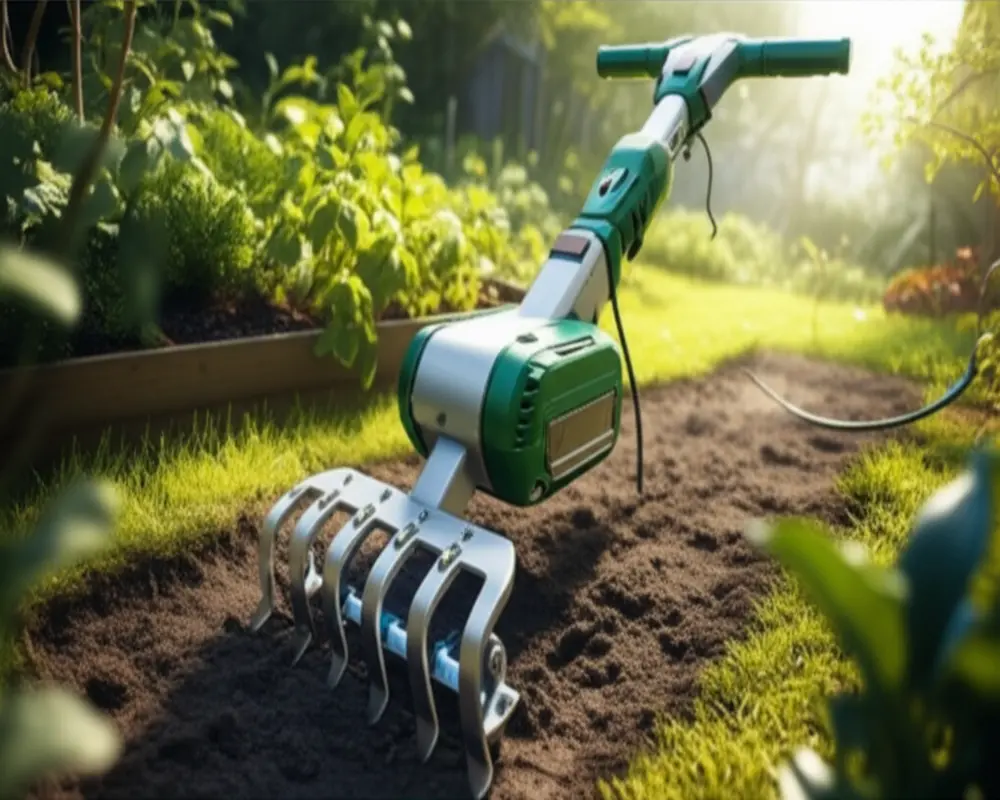Electric Garden Fork: Your 2025 Guide to Powered Soil Tools
When exploring modern gardening tools, many gardeners wonder about the existence of an electric garden fork. The term frequently pops up in online searches, yet a standard electric garden fork, as the name suggests, isn’t a product you can find on the market. Instead, a range of powered garden tools like electric tillers, cultivators, and hoes fulfill similar roles in soil preparation and maintenance. This guide dives deep into these alternatives, helping you navigate 2025’s best options for powered soil tools designed to ease your gardening workload.
Thank you for reading this post, don't forget to subscribe!Why Are People Searching for an Electric Garden Fork?
The quest for an electric garden fork primarily arises from a desire to reduce the physical strain associated with manual soil cultivation. Gardeners often face challenges such as compacted soil that’s tough to break up, inefficiencies with traditional DIY tools, and the need to cover larger areas with less effort. Those tackling hard or densely packed earth are especially interested in mechanized tools that deliver consistent, deep soil aeration while preserving their energy. The phrase “electric garden fork” captures this aspiration for power-assisted gardening solutions that make soil turning and aeration efficient and less taxing.
Real Powered Alternatives: Electric Soil Tools
A. Electric Tillers / Rototillers
An electric tiller is a robust powered soil tool designed to break up soil deeply and evenly by rotating tines that dig into the ground. These machines are excellent for larger garden plots where heavy-duty soil turning is necessary. They operate on either corded power or rechargeable batteries, offering flexibility based on your garden size and mobility needs.

The primary benefit of electric tillers includes ease of use, less noise compared to gas-powered models, and lower maintenance. However, they might not be as powerful for extremely compacted soils or very large acreage compared to their gasoline counterparts. Nevertheless, for standard gardens ranging between 500 to 2,500 square feet (approx. 46 to 230 square meters), electric tillers strike an optimal balance.
B. Electric Cultivators (Mini-Tillers)
For gardeners managing small to medium plots, electric cultivators, often called mini-tillers, offer precision and gentleness. These tools effectively aerate soil, mix in compost, and prepare planting beds without over-disturbing delicate garden structures such as raised beds or rows of transplants.

Electric cultivators are lightweight and maneuverable, ideal for flower beds and vegetable patches. They typically have smaller tines and shallower working depth than tillers, making them less suitable for challenging hardpan layers but excellent for routine cultivation and weeding tasks.
C. Electric Hoes (Handheld Cultivators)
For light soil work and targeted cultivation, electric hoes provide a handheld powered alternative. These compact tools are designed for spot cultivation, weeding, and soil preparation around plants without causing root damage.

The best electric hoes work well in small garden beds and container setups. Employing these tools can significantly reduce manual tedium associated with traditional hand tools.
D. Optional: Electric Aerators
While not typically called garden forks, electric aerators are an essential class of powered tools for lawn care. They perforate the soil to enhance oxygen, water, and nutrient penetration, encouraging healthy turf growth. Their function is more specialized compared to tillers or hoes and doesn’t substitute for soil turning but complements soil health maintenance.
How to Choose the Right Electric Soil Tool
Choosing the optimal powered soil tool depends on several factors tailored to your garden’s unique needs. First, consider your garden’s size: for areas over 1,000 square feet (about 93 square meters), electric tillers or rototillers are generally more efficient. Small gardens under 500 square feet (around 46 square meters) benefit greatly from cultivators or hoes.
Your soil type also matters—heavy clay soils often require more powerful tilling tools to prevent clogging, while sandy or looser soils allow lighter devices to perform well. For compact or rocky soils, robust electric tillers with strong tines and adjustable depth settings offer improved performance.
Power source is another crucial aspect: corded electric tools provide constant power but restrict mobility, while cordless models, powered by rechargeable batteries, deliver freedom with typically shorter operating times. Depending on your garden layout and access to outlets, choosing the right power setup will affect usability.
Other key features to scrutinize include tine design, depth control, overall weight, ergonomics to reduce user fatigue, and integrated safety mechanisms. Finally, budgets for electric garden tools in 2025 range from $150 to over $1,000, depending on complexity and brand—for instance, entry-level cultivators might be found around $200, while advanced tillers can cost upwards of $900.
Recommended Electric Tools of 2025
Based on consumer feedback and expert testing from authoritative sources such as the Consumer Reports on Electric Tillers and the USDA Electric Tiller Guide, here are top picks for 2025:
- Best Overall Electric Tiller: A mid-weight corded tiller with multiple tine adjustments, suitable for medium to large gardens.
- Best Cultivator for Small Gardens: A lightweight, handheld model with ergonomic handles and rechargeable power.
- Best Electric Hoe: Compact, with interchangeable attachments, ideal for weeding and soil preparation in tight spaces.
- Best Cordless Option: A battery-powered tiller with long runtime and quick recharge capabilities.
- Best for Hard/Compact Soil: An electric tiller with reinforced steel tines and higher torque motor for heavy-duty soil breaking.
Advantages of Electric Tools Over Manual Garden Forks
Comparing electric soil tools to traditional manual garden forks reveals advantages in reduced physical effort and time efficiency. Electric tools power through tough soils, providing consistent tilling depth and aeration, which manual forks might struggle to achieve evenly. This results in better seedbed preparation and promotes healthier root growth.
Moreover, powered garden tools offer versatility across various gardening tasks, reducing the need for multiple separate manual tools. Environmental considerations favor electric options over gas-powered alternatives due to zero local emissions and quieter operation, enhancing neighborhood compliance and garden enjoyment.
Tips for Use and Maintenance
Operate electric soil tools safely by following manufacturer instructions, wearing protective gear like gloves and safety glasses, and ensuring clear working areas are free from obstacles. Before use, remove large debris and mark underground utilities if present.
During operation, maintain steady forward movement, avoid forcing the tool without let the motor do the work, and adjust tine depth according to soil resistance. Post-use, clean tines and housing to prevent rust and dirt buildup, store tools in a dry environment, and regularly check for wear and electrical cord integrity.
For longevity, rechargeable batteries should be charged following charging cycle recommendations, and periodic servicing is advisable. Troubleshoot common issues like motor overload by consulting manufacturer guides or professional repair services.
Conclusion
Although the phrase electric garden fork describes a concept that isn’t realized as a distinct product, several highly effective electric-powered soil tools serve the same purpose and more. Electric tillers, cultivators, and hoes represent evolving technology that offers gardeners powerful, efficient, and user-friendly options for soil preparation in 2025. Selecting the right tool tailored to your garden’s size, soil type, and workflow preferences will enhance your gardening experience with less effort and better results.
For more insights into manual garden tools that complement electric options, consider our guides on best garden spades and ergonomic garden spades. These resources enrich your understanding of comprehensive soil management tools.
Frequently Asked Questions (FAQ)
Can an electric garden fork replace a manual garden fork completely?
While no exact electric garden fork product exists, electric tillers and cultivators effectively replace the manual effort needed for soil aeration and turning. However, manual forks may still be preferred for precise, delicate tasks or very tight spaces.
How deep can electric tillers and cultivators work?
Electric tillers typically achieve working depths up to 8 to 12 inches (20 to 30 cm), depending on the model. Cultivators work shallower, ideal for surface cultivation up to 4 to 6 inches (10 to 15 cm).
Are electric soil tools suitable for all soil types?
Electric tools perform well in most garden soils but may struggle with extremely compacted clay or rocky soils where heavy-duty gas-powered tillers might excel. Choosing a tool with adequate power and tine durability is key.
Should I choose corded or cordless electric garden tools?
Choose corded models if you have ample power outlets near your garden and want unlimited running time. Cordless options suit remote or larger gardens, offering greater mobility but limited by battery life.
Are electric garden tools noisy?
Electric garden tools generally operate quieter than gas-powered machines, generating moderate noise levels suitable for residential neighborhoods and early morning work.
What maintenance is required for electric soil tools?
Regular cleaning, tine inspection, battery care (for cordless), and safe storage prolong tool life. Always follow manufacturer maintenance guidelines for troubleshooting and servicing.

